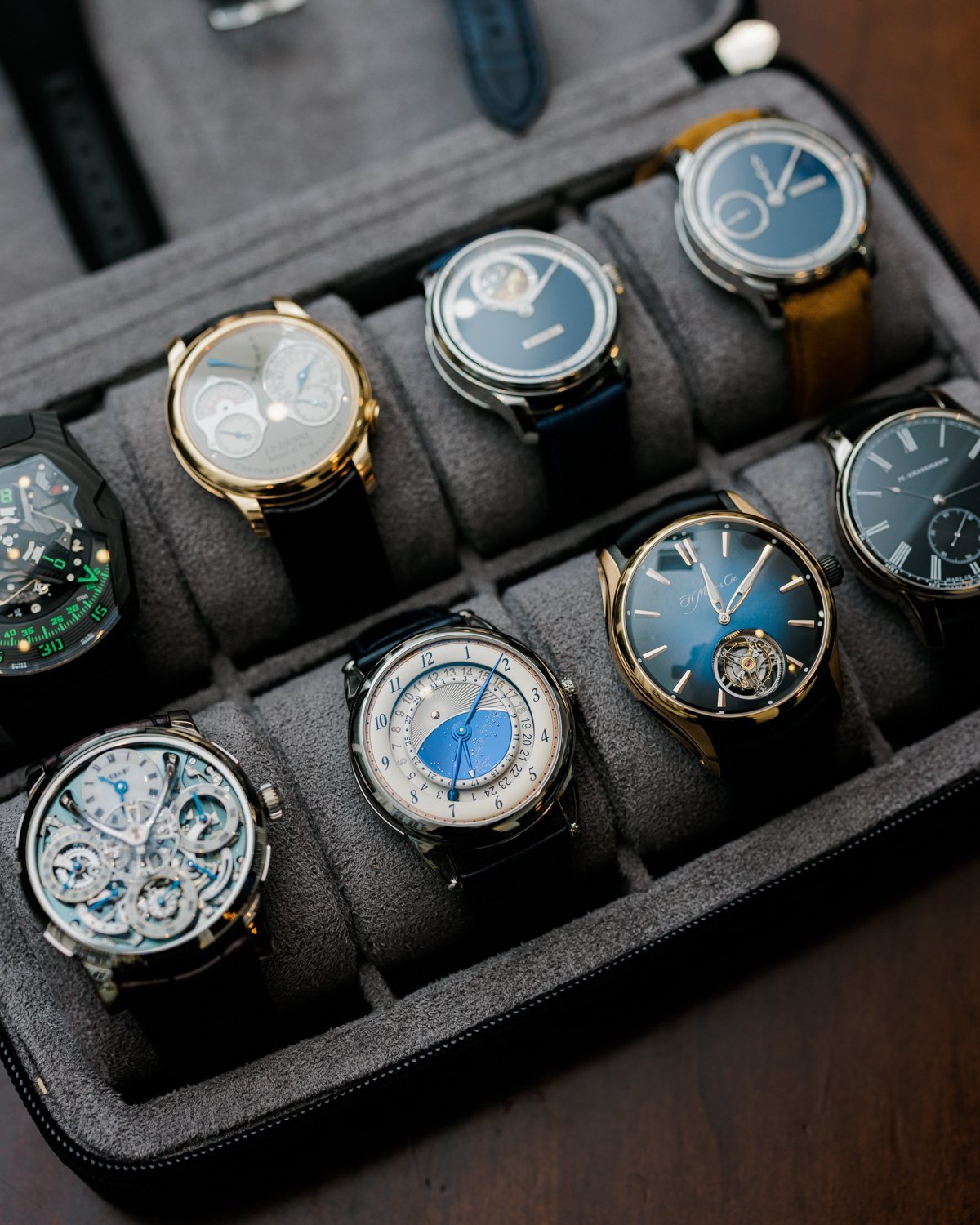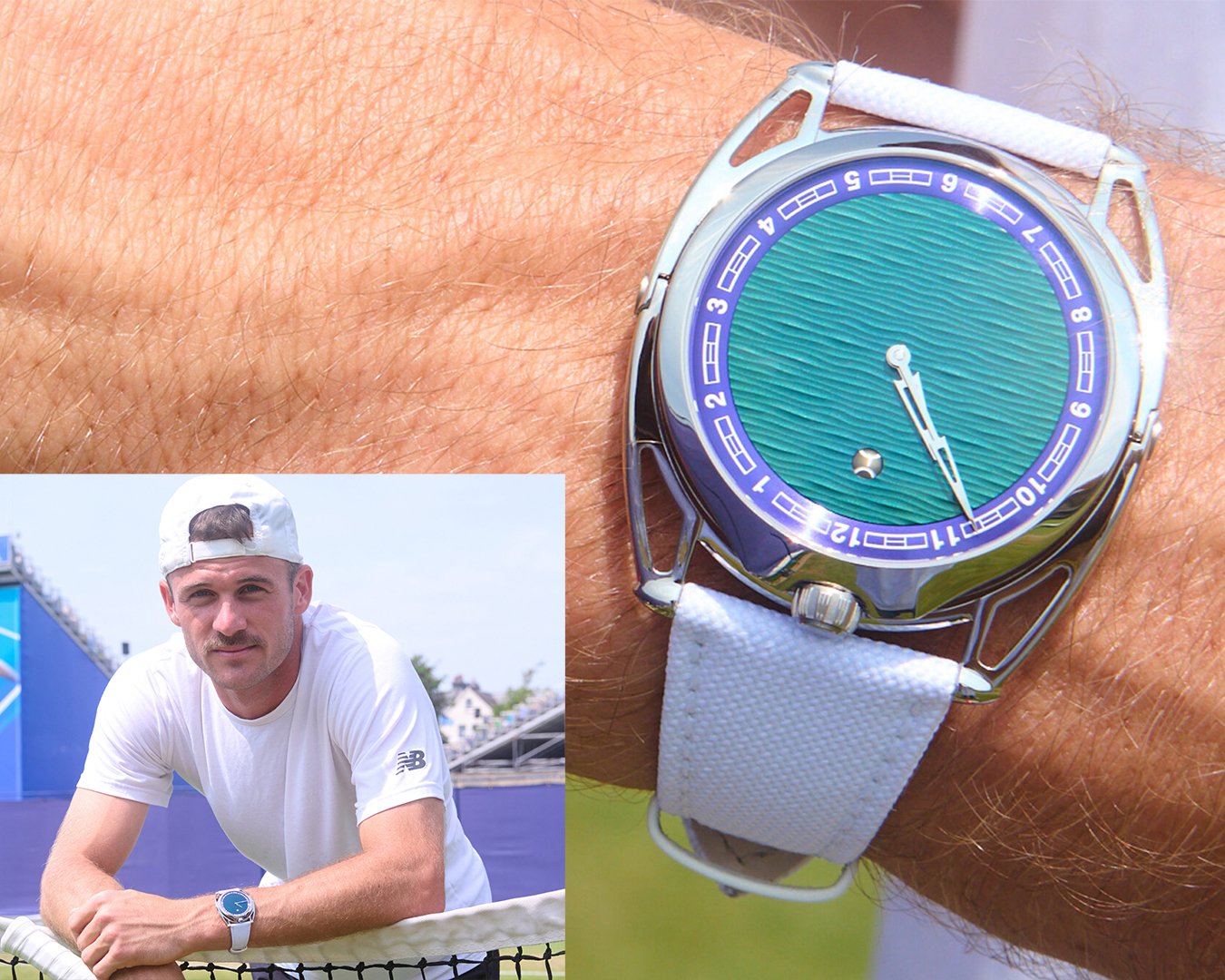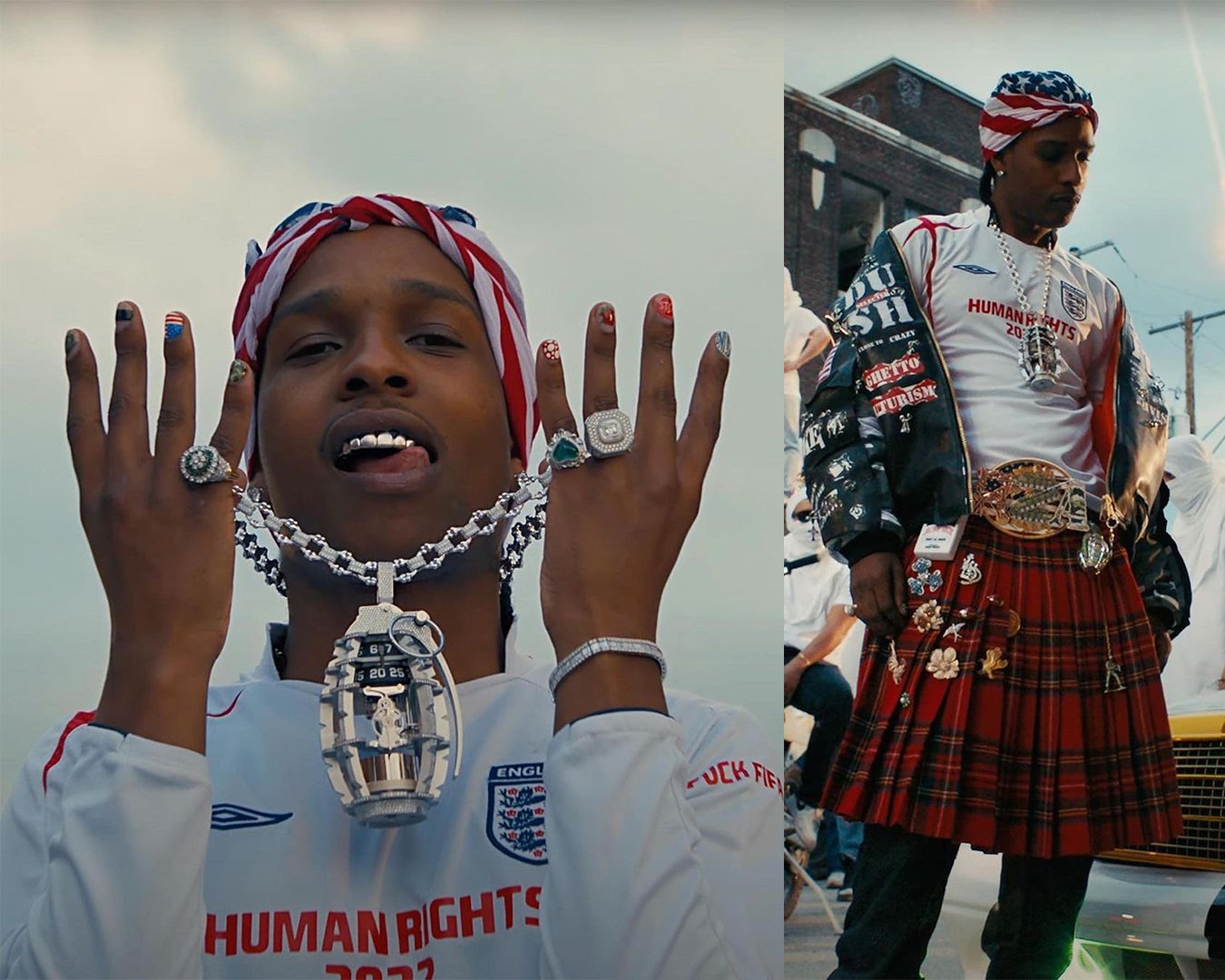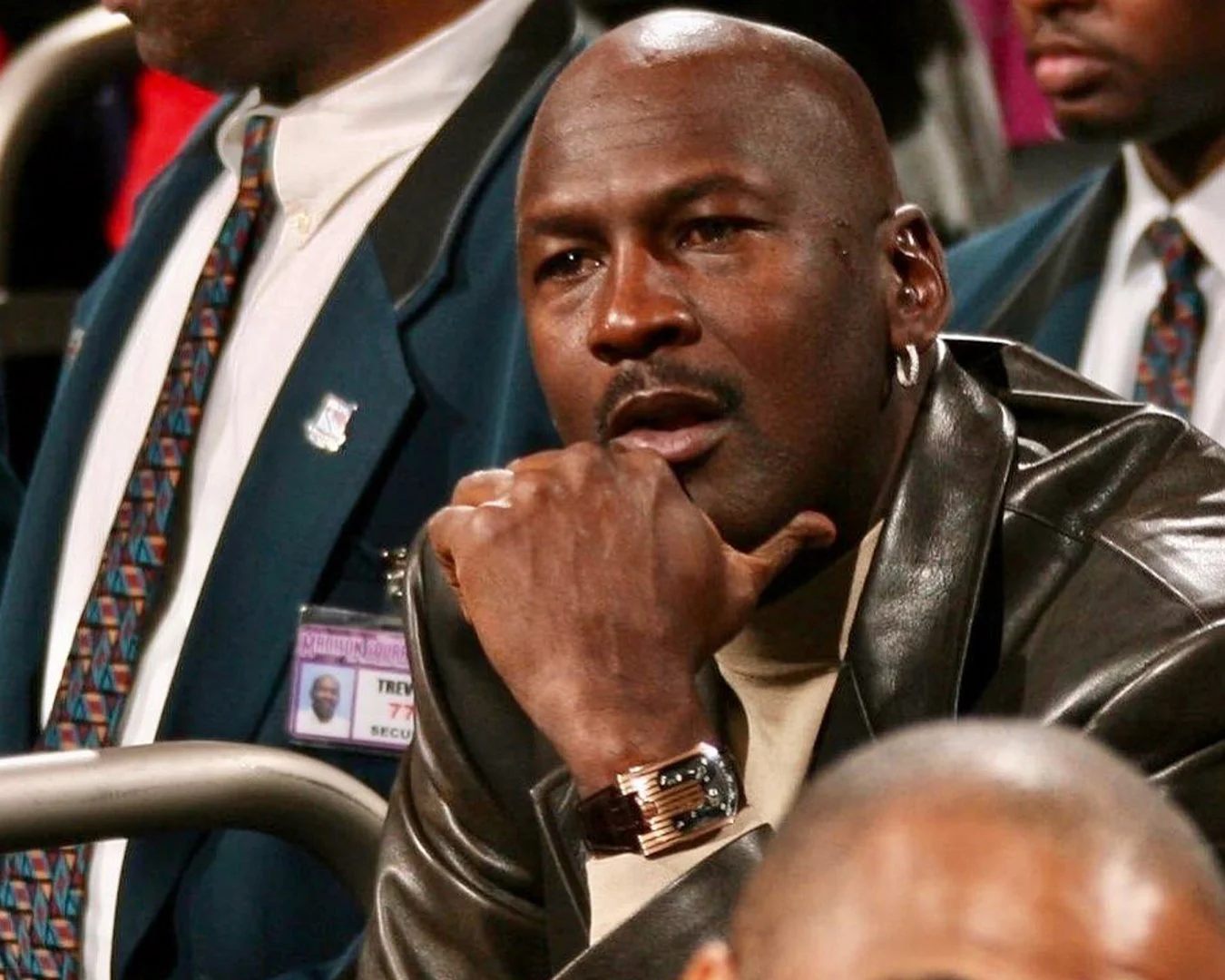Pop culture? Why indies are having a moment in the limelight
Read Time: 6 min
In 1904, Cartier created the first men’s wristwatch, the Santos, for the Brazilian aviator Alberto Santos-Dumont. Santos-Dumont’s celebrity status revolved around the spectacle of flying – he landed some of the earliest forms of airplanes directly on streets filled with pedestrians (well before aviation regulations were put in place). It’s really there, at the inception of the wristwatch, that the luxury watch industry’s relationships with celebrities begins. From Paul Newman to Eric Clapton to Arnold Schwarzenegger to Lebron James, the world’s biggest watch brands have collaborated with actors, athletes, musicians, adventurers, both officially and unofficially.
Until recently, pop culture figures sporting high-end timepieces was a reality almost exclusively reserved for the “big” brands – Patek Philippe, Audemars Piguet, Rolex, Richard Mille, Cartier, etc. Small-scale, artisanal watchmaking was simply never in that realm. Things are changing though. Independent watchmaking is now increasingly found on the wrists of celebrities and in pop culture, and the question is, “why now?”
Today, we’re diving into some of the more recent, pop culture moments for indie brands and laying out some thoughts on what has attracted more attention.
Indies in pop culture? Then and now
While this article has to do with a slew of more recent pop culture moments in indie watchmaking, we have to cast a light on some of the backdrop. One of the seminal events for indies in pop culture occurred about six years ago when Urwerk appeared in the Marvel Cinematic Universe. Robert Downey Jr, portraying Tony Stark / Iron Man, brought Urwerk’s avant-garde UR-110 RG to the big screen in 2017 with Spiderman: Homecoming. Then, Iron Man brought Urwerk back again for Avengers: End Game with the iconic UR-105 CT Streamliner – one of our favorites from the brand that we covered more extensively in a retrospective here. An indie on the wrist of the lead of one of the highest-grossing films of all time? It’s still one of the most prominent cameos of an independent watch to date.
The UREWRK UR-105 CT Iron (Photo Credits: Phillips)
There are, of course, some high-profile celebrity collectors that predate recent event. Michael Jordan is an avid collector of Urwerk, De Bethune, and Purnell. Ralph Lauren has an Urwerk UR-210 “All Black.” Swizz Beats, the musician and producer, has long collected De Bethune and even collaborated with the brand recently with the release of the Dream Watch 5 “Season 1” last year.
There’s a progressive trend with indies popping up in places where they previously had never. To name a few here:
De Bethune signed Tommy Paul, a top-20 American tennis player. He wears a “Wimbledon” Dial DB28 on court throughout the tournament.
Fleming, an indie watch brand with its first timepiece coming later this year, partnered with Casper Ruud, top-5 tennis player.
Kyle Kuzma, NBA player for the Washington Wizards, wears a De Bethune DB28 Kind of Blue to Fanatic CEO Michael Rubin’s “White Party” – a Fourth of July / birthday bash that brought nearly every A-list celebrity to his Hamptons’ home.
Fleming’s partnership with Casper Ruud (Credits: Fleming)
De Bethune’s partnership with Tommy Paul (Credits: De Bethune)
The biggest, recent splash though, somewhat more unusual than De Bethune or Urwerk, is fashion icon and hip-hop artist, ASAP Rocky, wearing a customized L’Epée Grenade clock on a chain in his latest music video, created in collaboration with jewelry designer, Alex Moss. The L’Epée 1839 x Alex Moss EXO Grenade gathered headlines all across the biggest fashion, music, and entertainment pages on social media. Reminiscent of Flava Flav’s clock chains, this is a modern rendition with heavy influence from all the indie watchmaking aspects that we love – it’s a thoroughly creative and modern take on clocks.
ASAP Rocky with the L’Epée 1839 x Alex Moss EXO Grenade collaboration (Credits: L’Epée 1839)
Ask us some years ago if we could imagine L’Epée front and center of an ASAP Rocky music video, we would have been very reluctant to say yes.
Factors driving this pop culture moment
So the question is, what about the last few years have propelled independent watchmaking more into the limelight of pop culture than ever before? There are a few driving factors that are coming together here:
The first factor: “small businesses” no more
Many independent brands are simply much more mainstream than ever before. We mentioned this point in our thoughts on the indie watch market: it’s a misnomer to label brands like MB&F, Urwerk, De Bethune, Greubel Forsey as “small businesses” in the typical sense of the term. Though their production volumes may be a fraction of conglomerates, social media has put these brands in front of millions. These are no longer niche creations for horological purists. As a whole, the indie market is far more established and resilient than ever before.
The second factor: Major players behind the scenes
As the market becomes more established, so come bigger players in the indie market. Though WatchBox’s majority-stake investment in De Bethune floated under the radar for many in 2021, this was a huge moment for the indies. Behind WatchBox sits a massive roster of celebrity investors from two-time NBA MVP Giannis Antetokounmpo to Michael Jordan to Good Morning America’s Michael Strahan to hedge fund manager Bill Ackman. With their majority stake in De Bethune, they are leveraging all they have to ensure that independent watchmaking moves to the next level. With LVMH revitalizing Daniel Roth, this is a trend that is sure to continue pushing independent brands into mainstream pop culture.
Michael Jordan with an early URWERK UR-103 (Credits: Instagram: @niccoloy)
The third factor: the novelty of creativity
Many independent brands have differentiated themselves through avant-garde designs and mechanisms. They take big swings, accept higher risks, and the payoff comes when the likes of Urwerk, De Bethune, MB&F, and L’Epée (to name only a few) stand out against the backdrop of the rest of the watchmaking market. It shouldn’t come as much of a surprise that the L’Epée Grenade stuck out to ASAP Rocky and Alex Moss, spurred their creativity, because it is simply wild. Functional with a pullable pin to set the time and wind the movement, there’s immense novelty in the brand’s horological creations. For those that search for avant-garde timepieces, there's an inevitability that they will find their way into the indie segment of the industry.
In many ways, this is a natural evolution from underground to mainstream – avant-garde creativity begins niche and slowly finds itself way into more everyday situations. This is the case with nearly every art movement, and can also be said for architectural, fashion, and entertainment movements. Even with all the progress, we’re sure that these are still the early days. More factors will arrive to push indie brands into the limelight of pop culture. We view it as a great recognition for indies that deserve it, and we’re excited to see more.






